Secret plans to 'merge Gloucester with Cheltenham' and create garden towns across county to build 142,400 homes by 2051
There are secret plans to "merge Cheltenham and Gloucester" while creating new garden towns across the county to build 142,400 new homes by 2051. Shire Hall bosses have been developing a long-term growth strategy for the county since 2020 but this is the first time this blueprint has been revealed to the public.
A leaked Gloucestershire County Council document suggests the creation of new garden towns in places such as Boddington, Standish, Cam, Moreton-in-Marsh, Kemble, Northwood Green near Westbury-on-Severn and Aylburton near Lydney. The draft strategy also proposes removing the green belt north of the A40 between Cheltenham and Gloucester.
Green belt is a policy, and land-use designation used to retain areas of largely undeveloped, wild, or agricultural land.
The confidential report says Gloucestershire has within its gift the key natural and built assets to tackle the housing challenges it faces. But, to be successfully delivered it will need a robust long-term vision for growth and a countywide spatial strategy to inform delivery.
The upper forecast housing for the whole county by 2051 is 142,380 new homes. Districts such as Cotswold and Tewkesbury will see the largest increase in housing with upper estimates of 36,270 and 31,110 homes each, according to these draft plans.
Stroud and the Forest of Dean are expected to provide 23,580 and 18,240 new houses by 2051. And 17,340 and 15,840 homes are expected to be built in Gloucester and Cheltenham respectively by that year.
The draft strategy suggests modest renewal growth in established urban areas and new garden towns to provide the bulk of the new housing. The map for the joint strategic plan for Cheltenham, Gloucester and Tewkesbury includes the already known garden town at Ashchurch but reveals major plans for a new garden town at Boddington.
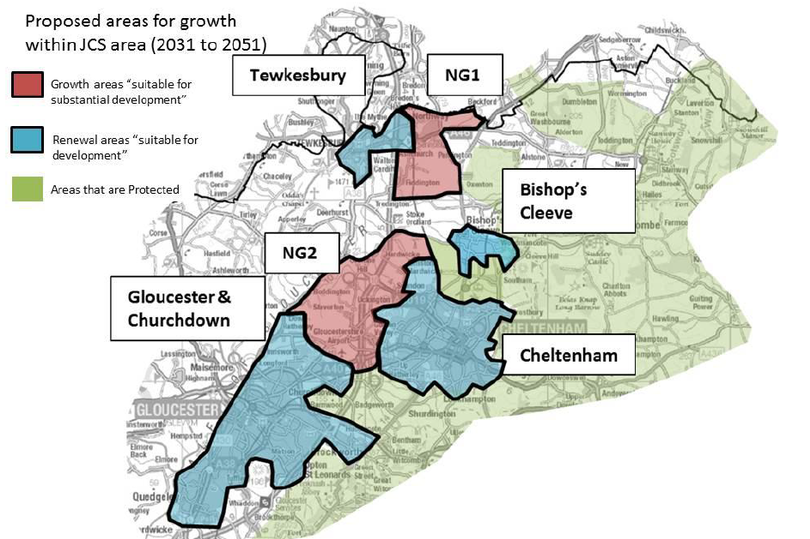
This new garden town would have 32,000 homes by 2051 according to the council's upper estimates. And it would require the removal of the existing green belt.
As a result, it would facilitate the merging of Cheltenham and Gloucester, although the use of green and blue infrastructure will avoid a sense of urban sprawl, the confidential report says.
Stroud District is required to provide around 20 per cent of the county’s new homes by 2051 - this totals 19,000 new dwellings. The focus there is the creation of a garden town at Standish which would be served by a new railway station north of Stonehouse on the Bristol to Birmingham mainline.
The extent of the site forms an extension to the existing urban area of Stonehouse. The report says the scale of growth identified for this site is substantial and necessary to ensure viability in providing the services required to support this new community.
There could be 14,200 new homes built there by 2051. And the new station would also provide the opportunity for a park and ride facility accessible from M5 Junctions 12 and 13.
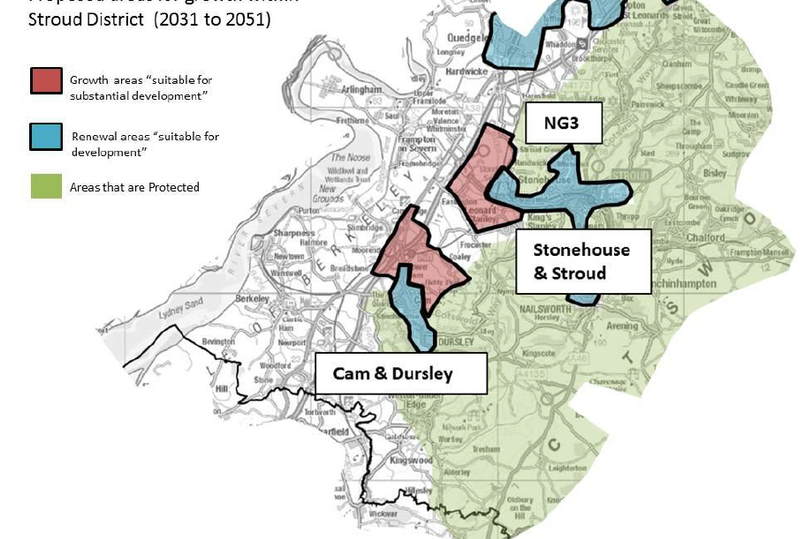
The growth strategy paper also proposes an extension to Cam which is centred on the railway station. By 2051, there could be 4,500 new homes in the area.
Due to the rail station being operational this is considered a key site for development in the short-term, the report reads. The report also says the Cotswold district will be the part of Gloucestershire most impacted by the changes as it will need to provide 25 per cent of the county’s new homes.
This amounts to 36,300 dwellings by 2051. To achieve this, two new garden towns would be built.
One in Moreton-in-Marsh and another in Kemble. The Moreton proposal includes new housing to the east of the town with a new bypass to remove through traffic from the historic centre.
The paper says Moreton offers the greatest scope for growth in the north of the district and it would have 7,000 properties by 2051.
It would help supply housing needs for those wanting to access the Oxford to Cambridge Innovation Arc and an expansion of the existing business park would also support employment opportunities.
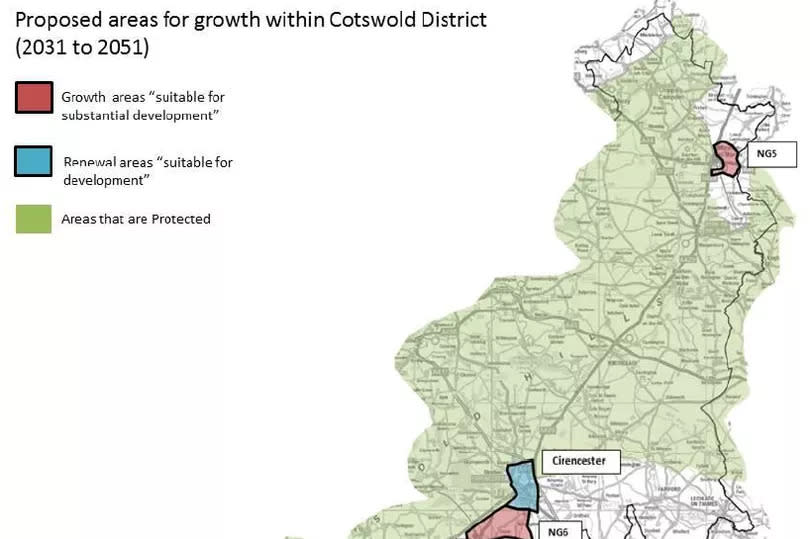
The garden town at Kemble would link Cirencester to the village’s railway station. The County Council expects the scale of growth between these two settlements will facilitate improved mass transport and walking and cycling links.
The authority estimates there would be 23,000 new homes in Kemble by 2051. And this development would also provide enough employment land at Cirencester to curtail commuting to Swindon while retaining a working age population which is essential to the long-term viability of the area.
For the Forest of Dean, the long term growth strategy suggests the creation of a new garden town at Northwood Green which would have 10,400 by 2051 and an urban extension in Aylburton with 2,800 houses.
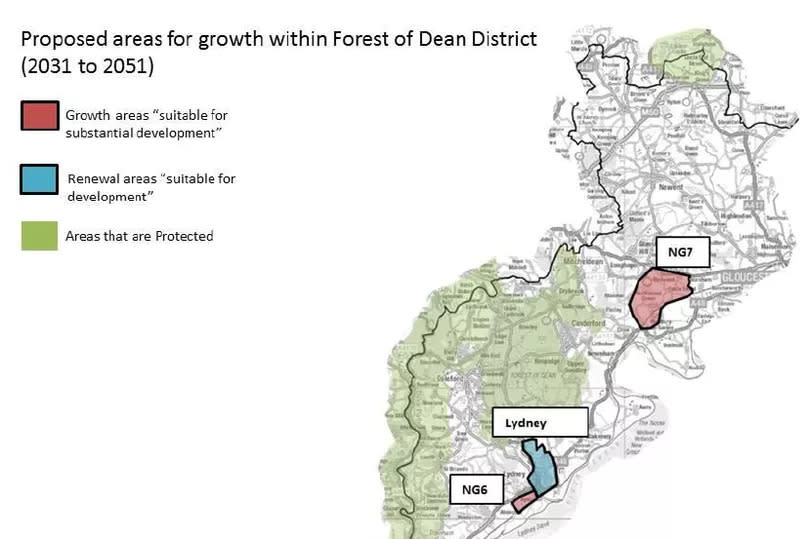
The idea for Northwood Green, which is located on the A48 west of Gloucester, would be built around a new railway station within the vicinity of Westbury-on-Severn.
The paper says flood mitigation measures are likely to be extensive to maintain full eyar resilience when accessing the city via the A40. The report suggests a new air line cable car/gondola be built linking the site with Gloucester to alleviate the pinch point at Over before a new station can be built.
This site would be accessed with enhanced bus and cycle routes improving links with Cinderford and Gloucester. A new park and ride facility would also be provided to alleviate congestion on the A40 at Over.

The Forest of Dean District Council leaders had decided to shelve plans for a new settlement in this area for their new development blueprint which would run until 2041. And district leaders had ruled out having any secret plans to develop this area.
However, this confidential paper was authored by Gloucestershire County Council and not by the District Council at Coleford. The Aylburton proposal would be an urban extension to Lydney which would benefit from existing rail facilities at the Severnside town.
This long-term growth strategy paper is understood to have been shared with the leadership of each of Gloucestershire’s six district councils. This includes relevant cabinet members and each district chief executive officer.
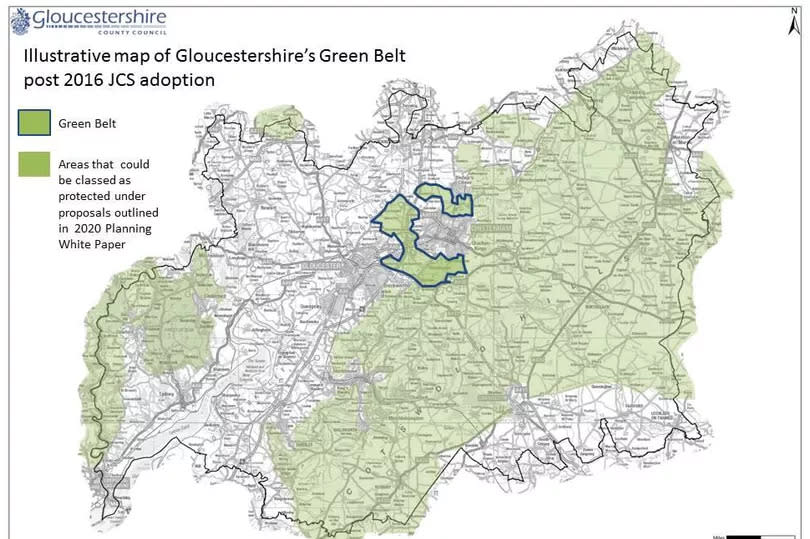
The draft confidential report says it will be essential to agree a statement of common ground between all the Gloucestershire authorities to act as a guiding principle and enable the process to be collectively owned.
Developing a long-term growth strategy will not be popular as any change is always first met with opposition, unless it is clearly articulated why that change is important and what the tangible benefits will be once the strategy is delivered, the paper reads.
If implemented successfully, the strategy will provide the foundation for the next 30 to 50 years of economic growth and ensure Gloucestershire is recognised as a desirable place, where people want to live because of the quality of area and the opportunities provided, according to council officers.
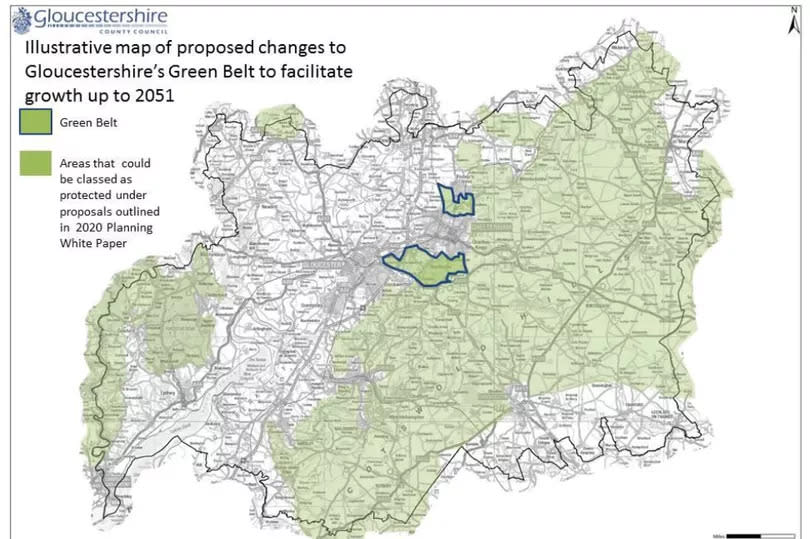
The draft paper highlights opportunities of accessing quality employment within the county, but also the opportunities provided by neighbouring areas such Birmingham and Bristol, linking the economies of London, Reading, West of England and South Wales and the Oxford to Cambridge Innovation Arc linking the economies of Swindon, Oxford and the Thames Valley.
Gloucestershire County Council response
Shire Hall bosses say the district councils have had sight of the document for four years and it is no more secret than their draft unpublished strategies. Gloucestershire County Council leader Mark Hawthorne (C, Quedgeley) said the document does not represent the authority’s policy and has never been agreed by councillors.
“It was an internal officer exercise run before the pandemic to simulate a number of different housing options and provide support for district councils as they evolved their local plans," he said. “The basis of the exercise was to highlight potential sites that could support the delivery of transport solutions.
“Districts have had a copy of this so called ‘secret’ exercise for four years, and the County Council has always made it clear that while we are here to help district colleagues, they have the ultimate say on where new housing is delivered."

 Yahoo News
Yahoo News 
